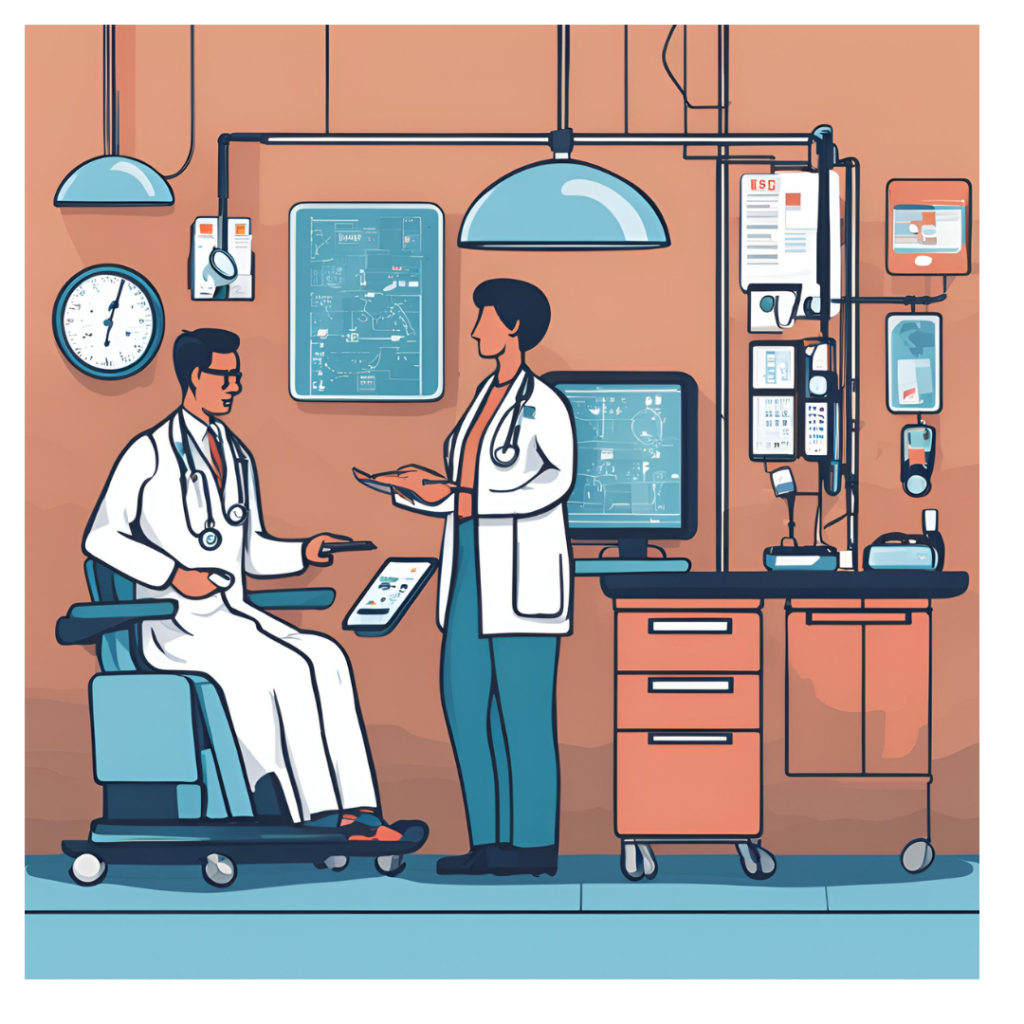Introduction
Telemedicine, the use of technology to provide remote medical care, has revolutionized the healthcare industry, particularly in urgent care settings. This article explores how telemedicine integrates with Electronic Medical Records (EMRs) in urgent care facilities, enhancing accessibility, efficiency, and patient outcomes. We delve into the benefits, considerations, and frequently asked questions surrounding this innovative approach to healthcare delivery.

Telemedicine Integration in Urgent Care EMRs
Telemedicine involves the remote diagnosis and treatment of patients through telecommunications technology, such as video conferencing and secure messaging. When integrated with EMRs in urgent care settings, telemedicine expands access to healthcare services beyond traditional clinic visits, allowing patients to receive timely care from anywhere.
Benefits of Telemedicine Integration
- Increased Access to Care: Patients in remote or underserved areas can access urgent care services without traveling long distances.
- Convenience for Patients: Telemedicine allows patients to consult healthcare providers from the comfort of their homes or workplaces, reducing wait times and travel expenses.
- Improved Efficiency: Healthcare providers can streamline workflows by conducting virtual visits, scheduling appointments, and accessing patient records directly within the EMR system.
- Enhanced Continuity of Care: Telemedicine integration ensures that patient information is seamlessly updated and shared among healthcare providers, promoting coordinated and comprehensive care.
- Cost Savings: Reduced overhead costs associated with clinic visits and emergency room admissions contribute to healthcare affordability for patients and providers alike.
Telemedicine Technologies and Tools
- Live Video Consultations: Real-time interaction between patients and healthcare providers for diagnosis, treatment, and follow-up care.
- Secure Messaging: Patients can communicate securely with healthcare teams, sharing symptoms, images, and medical history.
- Remote Monitoring Devices: Integration of devices like blood pressure monitors or glucose meters enables real-time data collection and analysis.
- Electronic Prescriptions: Providers can electronically send prescriptions to pharmacies, enhancing convenience and adherence to treatment plans.
- Telemedicine Apps: Mobile applications that facilitate virtual visits and patient engagement, integrated with EMR systems for seamless data management.
Considerations for Telemedicine Integration
- Regulatory Compliance: Adherence to state and federal regulations, including telehealth licensing and privacy laws (e.g., HIPAA compliance).
- Technology Infrastructure: Reliable internet connectivity and secure platforms are essential for delivering high-quality telemedicine services.
- Patient Education and Engagement: Educating patients about telemedicine benefits, usage, and privacy safeguards promotes acceptance and participation.
- Provider Training: Healthcare teams require training to effectively use telemedicine tools, communicate remotely, and document encounters in EMRs.
- Insurance Coverage: Understanding reimbursement policies for telemedicine services from private insurers and government healthcare programs.

FAQ about Telemedicine Integration in Urgent Care EMRs
1. What is telemedicine, and how does it differ from traditional healthcare? Telemedicine uses technology to provide remote healthcare services, whereas traditional healthcare involves in-person visits to clinics or hospitals.
2. How does telemedicine integrate with Electronic Medical Records (EMRs) in urgent care settings? Telemedicine platforms are integrated with EMR systems, allowing healthcare providers to access patient records, document visits, and coordinate care seamlessly.
3. What are the benefits of using telemedicine for urgent care consultations? Telemedicine increases access to care, enhances efficiency, improves patient satisfaction, and reduces healthcare costs.
4. Can all urgent care conditions be treated via telemedicine? Telemedicine is suitable for a wide range of urgent care conditions, including minor injuries, cold and flu symptoms, skin conditions, and follow-up appointments.
5. How secure are telemedicine platforms for protecting patient information? Telemedicine platforms adhere to strict security protocols, including encryption and HIPAA compliance, to ensure the confidentiality of patient information.
6. Do patients need special equipment or technology to participate in telemedicine visits? Patients typically need a smartphone, tablet, or computer with internet access and a webcam for video consultations.
7. Are telemedicine visits covered by insurance? Many private insurers and government healthcare programs provide coverage for telemedicine services, although coverage policies may vary.
8. How does telemedicine enhance continuity of care in urgent care settings? Telemedicine integration allows healthcare providers to access up-to-date patient records, coordinate follow-up care, and ensure consistent treatment plans.
9. Can telemedicine be used for prescribing medications? Yes, healthcare providers can electronically prescribe medications during telemedicine visits, sending prescriptions directly to pharmacies for patient convenience.
10. What steps should urgent care facilities take to implement telemedicine effectively? Implementing telemedicine requires selecting a reliable platform, training staff, educating patients, ensuring regulatory compliance, and integrating with existing EMR systems.

Conclusion
The integration of telemedicine into Electronic Medical Records (EMRs) has revolutionized urgent care delivery, offering patients greater accessibility, efficiency, and continuity of care. By leveraging technology to facilitate remote consultations and data management, urgent care facilities can meet the evolving healthcare needs of patients while improving operational efficiencies. Understanding the benefits, considerations, and implementation strategies for telemedicine integration empowers healthcare providers to embrace innovative solutions that enhance patient outcomes and satisfaction.
